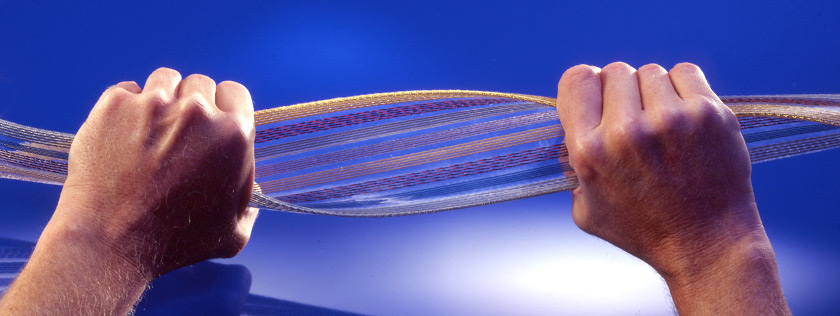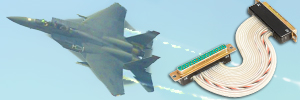Flat Cable Benefits

Top 10 reasons for Using Flat Cables
- Reliability
- The simplicity of flat cable with its parallel conductor geometry eliminates many of the common sources of wiring error and malfunction. Registration of the conductors is one-to-one with the terminating connector or board so that proper contact assignment is almost automatic.
- Weight Reduction
- The use of flat cable often eliminates much of the conventional wire weight. Such things as redundant insulating materials, fillers and tapes are not required. In addition, the composite flat cable construction is so mechanically strong that it is not necessary to have large conductors for strength. The copper cross-section can thus be reduced to what's required to carry the current load or to satisfy voltage drop requirements.
- Space Efficiency
- Eliminating unnecessary insulating, fillers and tapes reduces the bulk and physical volume of flat cables. In addition, their low profile enables them to hug surfaces and take advantage of tight, or normally-unused space. A rectangular cross-section allows flat cables to stack, or layer, with almost no wasted dead space between cables, providing maximum conductor density for a given volume.
- Flexibility
- Flat cable is extremely flexible when bent in the plane of its thin cross-section. This flexibility has been utilized in applications where continuous or high flexing is necessary, e.g. drawers, doors, rotating arms, etc.
- Greater Strength
- Strength is enhanced by the fact that all conductors and insulation equally share tensile loads.
- Consistent Electrical Characteristics
- Because the conductor spacing is fixed and the geometry of the cable is constant, the electrical characteristics, such as impedance, capacitance, inductance, time delay, crosstalk and attenuation, are consistent.
- Greater Current Carrying Capacity
- Flat cables have greater surface-to-volume ratio than their round cable counterparts, consequently having higher efficiency in dissipating heat. This allows a higher current level for a given temperature rise and conductor cross-section.
- Reduced Skewing Effects
- Due to the conductors having the exact physical and electrical length, along with a continuous and consistent dielectric, time delays between signals within a given flat cable are minimized.
- High-Density Interconnections
- The cabling density achievable using flat cable is superior to that using conventional cable because of the high wire-to-cable cross-sectional density. Layers of flat cable are more effectively packed for higher conductor density than round cable.
- Ease of Handling
- Flat cable folds and bends readily, conforms to the mounting area, fastens easily with clamps, adhesive, or double-faced tape, and eliminated the installation and lacing difficulties associated with round wire cabling. Visible conductor in a fixed position within the dielectric simplify coding, inspection and circuit tracing.



